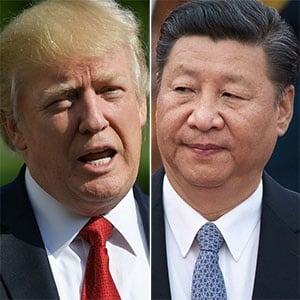Cape Town - The most important element of the ongoing trade dispute between the US and China could be regarding intellectual property (IP), according to economic research by S&P Global.
"While it has garnered fewer headlines than the promised tariffs on steel and aluminium - perhaps because of the political expediency around shoring up US manufacturing - US President Donald Trump's directive last August to launch an investigation into China's "theft" of US IP could reverberate more widely," S&P Global said in a report released on Monday.
S&P Global believes the US's proposed tariffs on up to $50bn of Chinese imports will have a subdued impact on the global technology sector.
The list of products subject to US tariffs includes more than 1 300 imported goods, such as aerospace technology, industrial machinery, medical equipment, medicine materials, and much more.
"Conspicuously absent from that list are products that would cause significant disruptions to the US economy or consumers, such as personal computers, laptops, cell phones, servers or telecom equipment - even though they represent a large proportion of US imports," said S&P Global.
An escalation in trade tensions between the US and China will have real-world ramifications, S&P Global has found.
"As the trade spat between the US and China drags on, it's become clear that a prolonged period of iciness between the countries, or an escalation of the dispute, could have notable effects on the world's two biggest economies," said S&P.
While the ratings agency estimates that US tariffs of 25% on $50bn worth of Chinese goods would shave a modest 0.1 percentage point from the gross domestic product (GDP) in 2018 and 2019, it pointed out that the dispute has ramifications for supply chains, employment and inflation.
In the view of S&P, the overall increase in consumer price inflation because of the proposed US tariffs would not be enough to get the US Federal Reserve to raise rates any faster. The consumer price inflation would, however, add to inflationary pressures that have been building in the supply chain.
A number of industries could, therefore, see their input prices rise. And US states with the most significant exposure to trade are vulnerable to the tug-of-war between the US and China.
This could also potentially lead to job losses in certain industries with more than two million American workers exposed to Chinese retaliatory tariffs on the export side, according to one estimate.
Worst-case scenario
In a worst-case scenario, the US and China could each levy tariffs on all the goods that the other sends to its shores - a total of $130bn of American exports to China and $506bn of Chinese exports to the US, says S&P.
Tariff rates could also be hiked higher than 25%, according to S&P.
"It's important to note that China can only counter any US tariffs by levying its own on $130bn of American goods - the full value of what the US sends to China. However, this doesn't account for any potential increases in exports to an economy that is growing at an annual pace exceeding 6% - more than twice the global rate," said S&P.
"Moreover, China can weigh on US business in other ways. Although the tariffs are not yet in place, soybean farmers may already be feeling the squeeze, with Chinese buyers reportedly having already halted purchases of this year's US soybean crop."
There are also a number of US industries that could see their input prices rise due to potential import tariffs on Chinese products. Not only do the tariffs have the potential to directly raise the prices of Chinese products, they also give non-Chinese suppliers of those products the opportunity to raise their prices, S&P pointed out.
For example, two-thirds of the inputs for aircraft manufacturing are at risk of higher prices, either directly or indirectly. Other industries with high degrees of exposure to the price-raising effects of tariffs include electrical equipment, appliances and components, fabricated metal products, plastics and rubber products, machinery, computer and electronic products, chemicals, and primary metals.
* Sign up to Fin24's top news in your inbox: SUBSCRIBE TO FIN24 NEWSLETTER
Follow Fin24 on Twitter, Facebook, Google+ and Pinterest. 24.com encourages commentary submitted via MyNews24. Contributions of 200 words or more will be considered for publication.





















